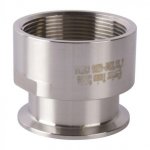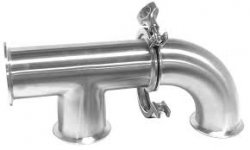Which unions have caused you problems? If you decide to do this it would be best to get CPVC pipe nipples cut in half or CPVC male adapters, and thread them into the Tri-Clamp adapters as opposed to using standard PVC MIP adapters.
Thanks for the replies.
Which unions have caused you problems?
- Looks like I have a few different unions on the piping. Seems every manufacturer uses a different one and charge a premium for their union. The Jandy unions on my nature2 fusion and connecting the Multiport valve to the filter seem excellent. Much larger than the others. Much heavier as well. The inlet and outlet of the multiport have a lighter duty union. Not sure if they came with the valve or supplied by pool company during install. Smaller OD, thinner construction. Others vary. -- Not sure if there are any special tools, typically, if I cannot loosed by hand, I grab with a big pipe wrench. Works well on Jandy unions, not so much on others. The tend to squash, bearing down hard on threads under the two jaws and opening on those areas 90 degrees to jaws. Not sure if there is a better tool to use.
CPVC nipples or Adapters
- Not sure what benefit there is to CPVC. Still Schedule 40 or 80 So pressure rating is the same. Think the only real benefit is temperature rating 200 vs 140, and that's not my issue, and only as good as weakest link. Also, not sure there is a cement rated for both PVC and CPVC (but I may be wrong). Plan is to use male fittings in plastic, female in stainless. I would think PVC will be fine in compression, In tension (Female PVC) would likely split the PVC if torqued too much. Weight shouldn't be an issue, as the fittings are small, and even if I use any pipe spools, the tubing is thin, probably no more weight that similar length of PVC. Cost is another issue. Schedule 40 PVC is cheap, Schedule 80 PVC can be 3 times the cost, Schedule 80 CPVC is even more. The stainless fittings would cost about as much as the schedule 80 couplings, but would be asier to remove, install and should outlast them.
Is there something I am missing here?
Main place I am looking to install is on a manifold where I plan to add pH, ORP Temp, sensors. I would put a bypass around the manifold So I could easily Shut down and remove probes (especially pH as it does not like to go dry).





